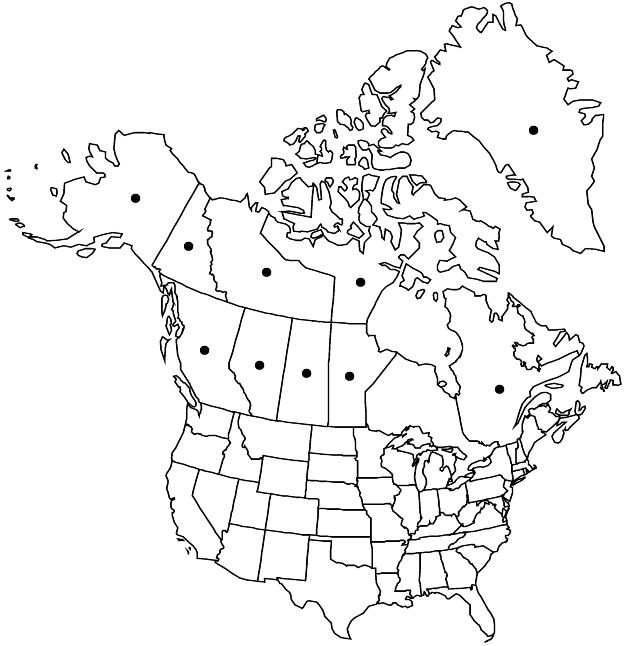Difference between revisions of "Potentilla arenosa"
in V. L. Komarov et al., Fl. URSS 10: 137. 1941.
FNA>Volume Importer |
FNA>Volume Importer |
(No difference)
| |
Revision as of 23:11, 16 December 2019
Plants scarcely to ± tufted. Caudex branches thick, not columnar, not sheathed with marcescent whole leaves. Stems ascending to erect, (0.3–)0.8–2.5(–4.5) dm, lengths (2–)3–5 times basal leaves. Basal leaves 1.5–12(–20) cm; petiole 1–7(–15) cm, long hairs sparse to abundant, spreading to ± ascending, rarely loosely appressed, 1–2(–2.5) mm, usually stiff, sometimes weak (subsp. chamissonis), verrucose, short and/or crisped hairs absent or sparse to abundant, cottony hairs absent, glands absent or sparse; leaflets separate to ± overlapping, central obovate, 1–3.5(–4.5) × 0.5–2(–3) cm, usually petiolulate, petiolule to 5 mm, base cuneate, margins slightly revolute, distal ± 3/4 incised ± 1/2 to midvein, teeth (2–)3–4(–6) per side, ± approximate to distant, surfaces dissimilar, often strongly so, abaxial white to gray, long hairs 0.5–1.8 mm, cottony-crisped hairs ± dense, adaxial green, sometimes grayish green, long hairs sparse to abundant, short-crisped hairs sparse to abundant. Cauline leaves (0–)1–2. Inflorescence 1–7(–15)-flowered. Pedicels 1.5–5 cm in flower, to 6(–10) cm in fruit. Flowers: epicalyx bractlets linear-lanceolate to lanceolate-elliptic, 2–5(–7) × 0.4–1.2(–1.5) mm, 1/4–1/2 as wide as sepals, margins usually flat, red glands absent or sparse and inconspicuous; hypanthium 3–5 mm diam.; sepals 3–6(–8) mm, apex acute; petals 4–7(–10) × 4–7(–9) mm, ± longer than sepals; filaments 0.8–1 mm, anthers 0.4 mm; carpels 28–40, apical hairs absent, styles conic-columnar, strongly papillate-swollen in proximal 1/5–1/3, 1–1.5 mm. Achenes 1.1 mm.
Distribution

North America, Eurasia.
Discussion
Subspecies 2 (2 in the flora).
The name Potentilla arenosa is now used for most arctic and subarctic plants previously treated as P. hookeriana or P. nivea subsp. hookeriana (Lehmann) Hiitonen. As noted by J. Soják (1986), the type of P. hookeriana has quinate leaves; that name is now restricted to a Rocky Mountain species in sect. Rubricaules. The arctic and subarctic material was briefly (1989–1999) called P. nivea, as discussed under that species. Because the type of P. nivea var. arenosa and other northern Asian specimens correspond closely to the North American plants, the name P. arenosa is assigned here.
The two subspecies differ only in one character, the petiole hairs, but are largely allopatric. Subspecies arenosa occurs in western and northern Greenland, northern North America (very northern in the east), and northern Asia (and perhaps northeasternmost European Russia); subsp. chamissonis occurs in southern Greenland, northeastern North America (more southern than subsp. arenosa), and northern Europe at least east to the Urals.
Selected References
None.
Key
| 1 | Petioles with common to abundant short and/or stiff crisped hairs in addition to long verrucose hairs. | Potentilla arenosa subsp. arenosa |
| 1 | Petioles with sparse or no short and/or soft crisped hairs in addition to long verrucose hairs. | Potentilla arenosa subsp. chamissonis |